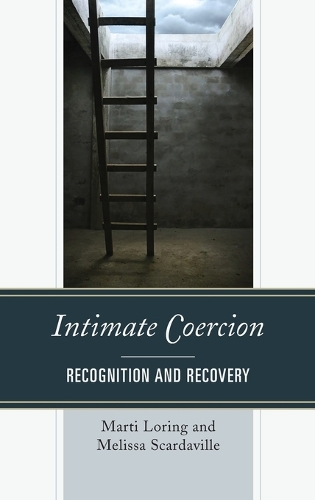
Intimate Coercion: Recognition and Recovery
(Hardback)
Publishing Details
Intimate Coercion: Recognition and Recovery
By (Author) Marti Loring
By (author) Melissa Scardaville
Bloomsbury Publishing PLC
Rowman & Littlefield Publishers
21st August 2015
United States
Classifications
Professional and Scholarly
Non Fiction
Sexual abuse and harassment
362.883
Physical Properties
Hardback
168
Width 161mm, Height 236mm, Spine 18mm
395g
Description
This book explores the foundation and causes of intimate coercion, focusing specifically on the identification of the issue and subsequent healing process. Coerced by a relation, friend, or lover, the victim commits acts that are contrary to their normal behavior, and often, illegal in nature. Marti Loring and Melissa Scardaville reference an extensive list of case studies to examine the varying dynamics and experiences of intimate coercion among the wide subset of the population that is affected; this list includes immigrants, disabled individuals, children, and elders. To aid therapists working with coerced individuals, Intimate Coercion defines coercive mechanisms, identifies distinct elements in the coercion process, and provides transformative tools for use with coerced individuals. Based on Lorings years of work in the courtroom and Scardavilles work with battered women, Intimate Coercion unveils the driving force of coerced behavior and explains how therapists can help treat this trauma.
Reviews
As the publisher's website states, this volume explores the foundation and causes of intimate coercion, focusing specifically on the identification of the issue and subsequent healing process. SociologistsLoring and Scardaville shine a light onintimate coercionand how devastating it can be for the victims and their families.In the book's 11 chapters, they provideinformation on what intimate coercion entails; how to evaluate subjects to determine if coercion is occurring; how coercion happens, and reasons why it continues, in a relationship; and what therapies work with coercion. The book details the types of abusephysical, sexual, and emotionalcommon to coercive relationships. Case studies scattered throughout the book are invaluable in helping the reader understand the nature of intimate coercionon the parts of the coerced and the coercer. A chapter on special populations highlights some of the distinct problems (deportation, making sexual orientation public, and so on) the groups mightface.The chapter on the transformation of coerced subjects using therapy and transformative tools is particularly interesting. This readablevolume will be valuable to anyone seeking to understand domestic violence, mental health problems, or criminal justice. Summing Up: Recommended. Upper-division undergraduates through faculty; professionals. * CHOICE *
This extraordinarily well-written book needs to be read by anyone who works in the criminal justice system; it fills a void in the literature. The authors have achieved their stated aim of 'making the lives of the coerced come alive' and offer practical pathways for lawyers, therapists, and others. -- Patricia Easteal, AM, University of Canberra
Intimate Coercion is a brilliant exploration of the cathartic power of connection in relationships. Loring and Scardavilles analysis of the dynamics of coercion help us understand how love mutates into abuse. A must read for anyone who wants to understand and improve their intimate relationships. -- Alex Prior, LICSW, Stone Center Counseling Service at Wellesley College
Through the use of personal accounts, Loring and Scardaville show us how a history of trauma from abuse plays a pivotal role in present and future choices, and how that history, for those coerced into breaking the law, may leave them questioning their own belief-systems, morals, boundaries, and even their sanity. These stories are so compelling, I cant help but stop to think that they could be about any woman I know. I asked myself, How many women in prison are there because of this type of coercion' -- Jan Christiansen, Georgia Coalition Against Domestic Violence
Author Bio
Marti Loring, LCSW, PhD, is clinical social worker and clinical sociologist. Melissa Scardaville, PhD, is a sociologist.
